Hiya! I’m Anna, a fourth-year vet student at R(D)SVS on the 5 year programme. I’m here to tell you some tips about how to get involved in wildlife and exotics work whilst at vet school, but first let me tell you a little bit about myself. I grew up in London and came to Edinburgh in 2020 to study veterinary medicine. My journey wasn’t the classic route; I hadn’t been on a farm until my first placement and hadn’t had any pets! I was originally drawn to human medicine after watching Grey’s anatomy… but after doing my first lambing placement, where I got so involved in the entire process and had such an incredible time, I realised this was an area I could see myself working in in the future.
Even before coming to Edinburgh, I was really interested in the wildlife and conservation side of veterinary medicine. I saw the degree as a gateway to working within One Health and on emerging zoonoses and infectious diseases rather than working as a vet in a small animal practice. This was spurred on by an obsession with all David Attenborough documentaries! I chose Edinburgh in part due to its great exotics departments’ reputation and I knew that this would help me pursue my passion for wildlife veterinary work. I thought I would use this blog post to describe how exotics and wildlife are taught at Edinburgh for anyone else who is interested!
As a disclaimer, this information is based on my own experiences within the 5-year programme and the vet school structure may have changed since I was taught. Also, any images containing animals are being handled for veterinary treatment and care.
Exotics and wildlife teaching starts in second year with the Animal Life and Husbandry lectures. In these, you start to learn how to care for parrots, raptors, waterfowl, pigeons, rabbits, rodents, ferrets and reptiles. These lectures are orientated more towards the identification of different species, sex identification, housing requirements, specific diets and safe handling techniques which is a great introduction to the field. In addition, within our Animal Body teachings there is always a section on the physiology and anatomy of these species, so we have a chance to learn just how different they are to the dog and cat! There are dissections and anatomy classes with many exotic species specimens so we can cement the theory we learn in the lectures into practice. 
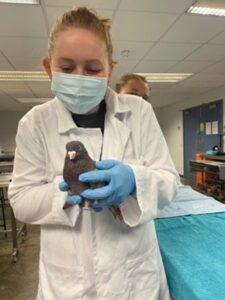
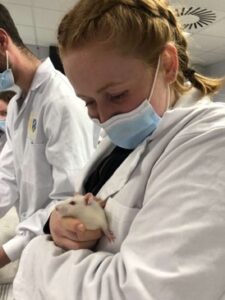
Then in third year we start learning specific animal handling techniques on teaching animals. These classes are always super fun and a definite highlight of third year. If you have a specific animal fear or aversion, this will be noted before the classes are arranged so accommodations are made to get everyone to be as comfortable and safe in these classes as possible. Throughout several practical classes, you are introduced to snakes, turtles, guinea pigs, rabbits, hamsters, chickens, pigeons, rats and many more! You will strengthen what was taught in those second-year lectures about their husbandry and get a chance to practice safe handling techniques for these species. At the end of the practical classes, there is a handling exam to check our knowledge and ensure we are handling animals safely.
In fourth year, there is a whole semester module on Integrated Clinical Course in Exotics which for my year will run from January to April. This is where the bulk of the exotics teaching is covered and where we learn the common infectious diseases, and pathologies, surgical and medical treatments affecting this range of species. Alongside this lecture teaching, there will be more practical classes on exotics handling, but this time with more of a focus on the diagnosis of a condition based on a clinical exam, utilising the safe handling we learned in third year.
In our final year, we have some “selective” rotations where we can choose to specialise a bit more in areas we are planning on going into in the future. Within these selections, there is the choice of doing a rotation block at Edinburgh Zoo or in Conservation Medicine or the Dick Vet Rabbit or Exotics department!
Alongside the course content, there are some societies that bring in external lecturers and wildlife conservation workers. In particular, the Dick Vet Wildlife and Conservation Society has been a great source of incredible speakers that can be useful future contacts as well as sources of advice on how to get into this line of work post-graduation. This society also offers travel grants for international wildlife EMS which can be a massive help, especially with international travel fares and equipment costs.
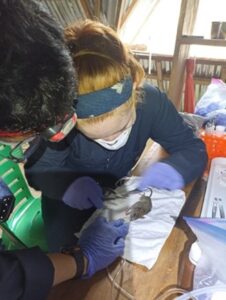
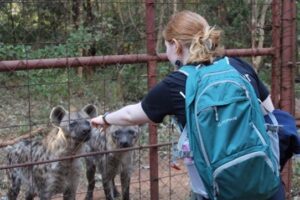
Finally, you can also tailor the degree towards wildlife and exotics through your EMS. Before vet school, I did work experience at a wildlife rescue charity in the south of England, which was incredible, and I got to work with species like hedgehogs, foxes, badgers, and deer! In my second year, I did a week of animal husbandry EMS at a smaller zoo based in Fife, where I helped with feeding and cleaning out enclosures as well as designing enrichment activities. Over my second summer, I joined a research organisation based in Peru where I worked alongside wildlife vets and researchers to collect biological data from a range of species in the Amazon rainforest. Last summer I did a placement in Malawi in a wildlife rescue centre, and began my research project there into gastrointestinal parasites in monkeys!
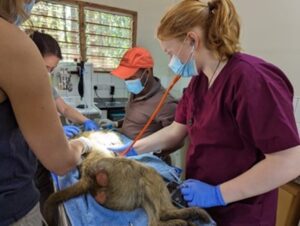
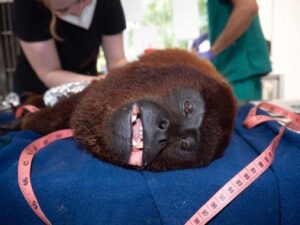
I hope you can see from this that there is ample opportunity to find wildlife placements both in the UK and abroad, and I can say from my slightly biased opinion that these have been my favourite experiences at vet school!!!I hope this blog has given you a little insight into the wildlife and exotics teaching covered at the vet school, but feel free to reach out if you have any more questions.
Terms used in this Blog:
Exotics = within the course we use the term ‘Exotics’ to cover any species that isn’t a dog, cat, sheep, cow, horse, or other farmyard animals.
EMS = extramural studies – this is a part of all vet schools where we have to achieve a set number of pre-clinical and clinical work experiences during our holiday times to strengthen the knowledge covered in the course.
